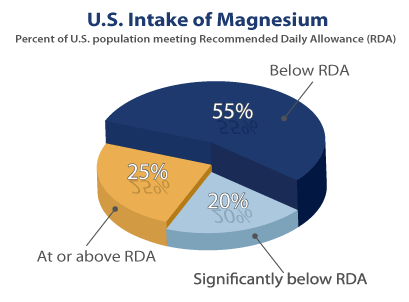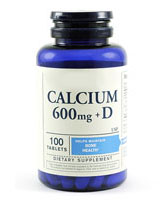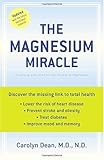January 6, 2012 |
Why do some of us become dissident mental health professionals?
The majority of psychiatrists, psychologists and other mental health professionals “go along to get along” and maintain a status quo that includes drug company corruption, pseudoscientific research and a “standard of care” that is routinely damaging and occasionally kills young children. If that sounds hyperbolic, then you probably have not heard of Rebecca Riley, and how the highest levels of psychiatry described her treatment as “appropriate and within responsible professional standards.”
When Rebecca Riley was 28 months old, based primarily on the complaints of her mother that she was “hyper” and had difficulty sleeping, psychiatrist Kayoko Kifuji, at the Tufts-New England Medical Center in Boston, Massachusetts, diagnosed Rebecca with attention deficit hyperactivity disorder (ADHD). Kifuji prescribed clonidine, a hypertensive drug with significant sedating properties, a drug Kifuji also prescribed to Rebecca’s older sister and brother. The goal of the Riley parents—obvious to many in their community and later to juries—was to attain psychiatric diagnoses for their children that would qualify them for disability payments and to sedate their children making them easy to manage.
By the time Rebecca was three years old, again based mainly on parental complaints, Kifuji had given Rebecca an additional diagnosis of bipolar disorder and prescribed two additional heavily sedating drugs, the antipsychotic Seroquel and the anticonvulsant Depakote.
At the age of four, Rebecca was dead.
At the time of her death, Rebecca had a life-threatening amount of clonidine—enough to kill her—in her body, according to the former director of the Massachusetts toxicology lab and the medical director of a regional poison control center. The medical examiner who performed the autopsy concluded that Rebecca died from intoxication of clonidine, Depakote and two over-the-counter cold and cough medicines that led to heart failure, lungs filled with bloody fluid, coma, and then death. Rebecca’s abusive parents went to prison for the over-drugging that led to their daughter’s death.
Kifuji’s fate? The psychiatric establishment rallied around Kifuji, enabling her to return to Tufts Medical Center practicing child psychiatry without any restrictions, penalties or supervision. After Rebecca’s death, Tufts-New England Medical Center defended Kifuji. A Tufts spokesperson told “60 Minutes” in 2009, “The care we provided was appropriate and within responsible professional standards.”
Apparently, psychiatric care that is considered appropriate and within responsible professional standards includes diagnoses of ADHD for a two-year-old and bipolar disorder for a three-year-old when the symptoms of those disorders are normal behaviors for those ages; prescribing three heavily sedating drugs that have not been approved by the FDA for child psychiatric treatment; ignoring the warnings from a school nurse about over-dosages for Rebecca; and making diagnoses based almost entirely on the reports of Rebecca’s mother, who herself was diagnosed with mental illness and heavily medicated to the point of falling asleep in Kifuji’s office.
Long before the Rebecca Riley tragedy hit the headlines, I was embarrassed by the mental health profession for seven major reasons:
1. Corruption by Big Pharma
How did it become within responsible professional standards for a two-year-old to get an ADHD diagnosis, for a three-year-old to get a bipolar diagnosis, and for toddlers to be prescribed multiple heavily sedating drugs? The short answer is drug company corruption of the mental health profession.
Congressional hearings in 2008 revealed that psychiatry’s “thought leaders” and major institutions are on the take from drug companies.
On June 8, 2008, the New York Times reported about psychiatrist Joseph Biederman: “A world-renowned Harvard child psychiatrist whose work has helped fuel an explosion in the use of powerful antipsychotic medicines in children earned at least $1.6 million in consulting fees from drug makers from 2000 to 2007.”
Due in large part to Biederman’s influence, the number of American children and adolescents treated for bipolar disorder increased 40-fold from 1994 to 2003. Pediatrician and author Lawrence Diller notes about Biederman, “He single-handedly put pediatric bipolar disorder on the map.” In addition to his popularization of bipolar disorder for children, Biederman is one of the most significant forces behind the expanding numbers diagnosed with ADHD; and congressional investigators also discovered that Biederman conducted studies of Eli Lilly's ADHD drug Strattera that were funded by National Institute of Health at the same time he was receiving money from Lilly.
Not only does the drug industry have influential psychiatrists such as Biederman in their pocket, virtually every major mental health institution is financially interconnected with Big Pharma. Congressional hearings also exposed the American Psychiatric Association psychiatry’s premier professional organization, as being on the take from drug companies. In 2006, the drug industry accounted for about 30 percent of the APA’s $62.5 million in financing. Most relevant here, the APA is the publisher of the psychiatric diagnostic bible, the Diagnostic and Statistical Manual of Mental Disorders (DSM), and thus the APA is the institution responsible for creating mental illnesses and disorders.
2. Invalid Illnesses and Disorders
Psychiatry’s first DSM (1952) and its DSM-II (1968) listed homosexuality as a mental illness. Only because of a fierce political fight waged in the 1970s by gay activists did the APA abolish homosexuality as an illness and eliminate it from its DSM-III (1980). Gay activists’ fight was not only a victory for themselves but a service for everyone else, as it made public the important scientific problem of psychiatric disorder invalidity. Specifically, are psychiatric disorders scientifically valid illnesses, or are they simply behaviors that create discomfort for some authorities at a given moment in time?
While psychiatry lost homosexuality as a mental illness in the 1980 DSM-III, the APA found other groups it could pathologize, groups that could not mobilize and resist, most notably children, who are now routinely given psychiatric diagnoses for behaviors that many of us view as normal for their ages.
Psychiatry sees it as within responsible professional standards to diagnose three-year-olds such as Rebecca Riley with bipolar disorder. The symptoms of bipolar disorder include irritable and rapidly changing moods, severe temper tantrums, defiance of authority, agitation and distractibility, sleeping too little or too much, poor judgment, impulsivity and grandiose beliefs.
Psychiatry also sees it as within responsible professional standards for Rebecca Riley to have been diagnosed at 28 months old with ADHD. The symptoms of ADHD are inattention (easily distracted and bored, difficulty organizing and completing tasks, losing things, not seeming to listen, not following instructions); hyperactivity (fidgeting, talking nonstop, having trouble sitting still, difficulty with quiet tasks), and impulsivity (impatience, blurting out inappropriate comments, interrupting conversations).
Today, children and teens are also diagnosed with oppositional defiant disorder (ODD), the symptoms of which include “often actively defies or refuses to comply with adult requests or rules,” and “often argues with adults.”
The standard for a medical disorder should not be whether or not an individual causes friction.
3. Scientifically Unreliable Diagnoses
Even if you believe that bipolar disorder for three-year-olds, ADHD for two-year-olds, ODD for teenagers, and all the other DSM diagnoses are valid disorders, there is still the scientific issue of diagnostic unreliability—the lack of diagnostic agreement among professionals examining the same person.
A generation ago, psychiatrists admitted that their diagnoses were unreliable and agreed that this was a major scientific problem. So in 1980, in an attempt to eliminate this embarrassment, they created the DSM-III with concrete behavioral checklists and formal decision-making rules, but they failed to correct the problem. Psychiatric diagnoses remain unreliable, but now psychiatry no longer talks about the unreliability problem.
If a measurement is a reliable one, then clinicians trained with it should be in high agreement on the diagnosis. A major 1992 study, conducted at six sites with 600 prospective patients, was done to examine the reliability of psychiatric diagnoses. Experienced mental health professionals were given extensive training in how to make accurate DSM diagnoses. Because of the extensive training, one would expect that diagnostic agreement would be much higher than in typical clinical settings. Herb Kutchins and Stuart Kirk summarize the study in Making Us Crazy (1997):
What this study demonstrated was that even when experienced clinicians with special training and supervision are asked to use DSM and make a diagnosis, they frequently disagree, even though the standards for defining agreement are very generous. . . . [For example,] if one of the two therapists made a diagnosis of Schizoid Personality Disorder and the other therapist selected Avoidant Personality Disorder, the therapists were judged to be in complete agreement of the diagnosis because they both found a personality disorder—even though they disagreed completely on which one! So even with this liberal definition of agreement, reliability using DSM is not very good.
Kutchins and Kirk conclude: “Mental health clinicians independently interviewing the same person in the community are as likely to agree as disagree that the person has a mental disorder and are as likely to agree as disagree on which of the over 300 DSM disorders is present.”
4. Biochemical Imbalance Mumbo Jumbo
Just as nothing was more important in selling the Iraq war in 2003 than the Bush administration’s certainty that Iraq possessed weapons of mass destruction, nothing has been more important in selling psychiatric drugs than psychiatry’s certainty of biochemical brain imbalances as the cause for mental illnesses.
Prior to psychiatry’s proclamation that depression was caused by too little of the neurotransmitter serotonin, few Americans were taking antidepressants. But by declaring that depression was caused by a serotonin imbalance analogous to diabetes and an insulin imbalance, depressed Americans became far more receptive to serotonin-enhancing drugs such as the “selective-serotonin-reuptake inhibitors” (SSRIs) Prozac, Paxil, and Zoloft.
SSRIs can make some depressed people feel better; however, alcohol makes some shy people less shy, but that’s not enough evidence to say that shyness is caused by an alcohol imbalance. The truth is—and scientists have known this for quite some time—that serotonin levels are not associated with depression.
Researchers have used a variety of methods to test the serotonin imbalance theory of depression, including comparing serotonin metabolites in depressed and nondepressed people, and depleting serotonin levels through a variety of means and then observing whether this resulted in depression. Elliot Valenstein, professor emeritus of psychology and neuroscience at the University of Michigan, reviewed the research in his book Blaming the Brain (1998) and reported that it is just as likely for people with normal serotonin levels to feel depressed as it is for people with abnormal serotonin levels, and that it is just as likely for people with abnormally high serotonin levels to feel depressed as it is for people with abnormally low serotonin levels. Valenstein concluded, “Furthermore, there is no convincing evidence that depressed people have a serotonin or norepinephrine deficiency.”
In 2002, the New York Times reported: “Researchers knew that antidepressants seemed to raise the brain’s levels of messenger chemicals called neurotransmitters, so they theorized that depression must result from a deficiency of these chemicals. Yet a multitude of studies failed to prove this precept.”
Yet even now, many psychiatrists and other mental health professionals continue to promulgate the serotonin imbalance theory of depression, and polls show that the majority of Americans continue to believe it.
5. Pseudoscientific Drug Effectiveness Research
There are multiple tricks that psychiatric drug manufacturers and their researcher psychiatrists and psychologists use to make their drugs look more effective than they really are. One of the most common depression measurements used by researchers paid by drug companies is the Hamilton Rating Scale for Depression. In the HRSD, researchers rate subjects, and the higher the point total, the more one is deemed to be suffering from depression. On the HRSD, there are three separate items about insomnia (early, middle and late) and one can receive up to six points for difficulty either falling or remaining asleep; however, there is only one suicide item, in which one is awarded only two points for wishing to be dead. The HRSD is heavily loaded with items that are most affected by drugs, and it is therefore especially damning for antidepressants that even with such measurement dice-loading, these drugs routinely fail to outperform placebos—even dice-loaded placebos.
Proper drug research requires that neither subject nor experimenter knows who is getting the drug and who is getting the placebo (a true double-blind control). Drug company antidepressant researchers use inactive placebos such as sugar pills (which don’t create side effects). Independent research on inactive placebos show that many subjects in antidepressant and other studies can guess if they are getting the actual drug or not, which changes their expectations and subverts the double-blind control. In order to make it more difficult to guess correctly, an active placebo (which creates side effects) should be used. In 2000, a Psychiatric Times article concluded: “In fact, when antidepressants are compared with active placebos, there appear to be no differences in clinical effectiveness.”
Dice-loading depression measurements and placebos are just two of many techniques drug company researchers use to make antidepressants look more effective than they really are. But even with such dice-loading, antidepressants have not fared well, at least when one examines all the studies.
Drug companies try to ensure that those studies showing antidepressants to be no more effective than placebos are not published; however, all studies must be submitted to the FDA. So independent researcher Irving Kirsch and his research team at the University of Connecticut used the Freedom of Information Act to gain access to all data, and analyzed 47 studies that had been sponsored by drug companies on Prozac, Paxil, Zoloft, Effexor, Celexa, and Serzone. Kirsch discovered that in the majority of the trials, the antidepressant failed to outperform a sugar pill placebo (and in the trials where the antidepressant did outperform the placebo, the advantage was slight).
6. Psychotropic Drug Hypocrisy
Chemists consider psychiatric prescription drugs and illegal mood-altering drugs all to be psychotropic or psychoactive drugs. Cocaine and ADHD drugs such as Adderall and other amphetamines affect the neurotransmitters dopamine, serotonin, and norepinephrine; and antidepressants used in combination also affect the same neurotransmitters. Not only are prescription psychotropics and illegal psychotropics chemically similar, they are used by people for similar reasons, including taking the edge off their discomfort so they can function. The hypocrisy surrounding illegal and prescription psychotropic drugs is harmful to society in at least two ways.
At one level, because people are being misinformed about the realities of prescription psychotropic drugs, they are more likely to gulp them down and to give them to their children. This has helped create a tragic phenomenon detailed by investigative reporter Robert Whitaker in his book Anatomy of an Epidemic (2010). Psychiatric drug use turning mild and episodic conditions into severe and chronic ones has helped create a huge increase of Americans with severe mental illness, especially among children.
At a second level, this psychiatric-illegal psychotropic drug hypocrisy allows for unfair criminalizing and incarceration of people using illegal psychotropics.
7. Diversion from Societal, Cultural and Political Sources of Misery
When we hear the words disorder, disease or illness, we think of an individual in need of treatment, not of a troubled society in need of transformation. Mental illness expansionism diverts us from examining a dehumanizing society.
In addition to pathologizing normal behavior, the mental health profession also diverts us from examining a society that creates the ingredients—helplessness, hopelessness, passivity, boredom, fear, and isolation—that cause emotional difficulties. We are diverted from the reality that many emotional problems are natural human reactions to loss in our society of autonomy and community. Thus, the mental health profession not only has financial value for drug companies but it has political value for those at the top of societal hierarchies who want to retain the status quo.
Today, a handful of dissident mental health professionals do challenge and resist their profession’s dehumanizing standard practicies. I know several of these dissidents, and they are the only psychiatrists, psychologists and mental health professionals that I have any respect for.








